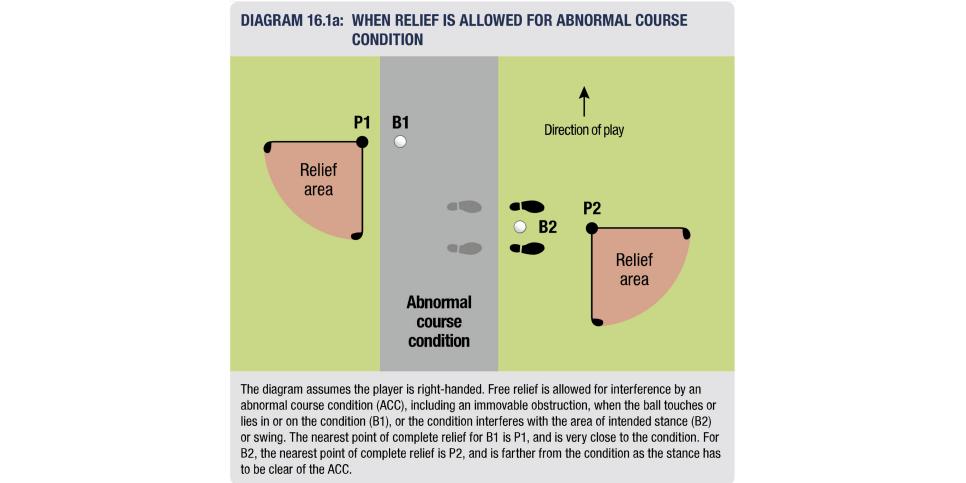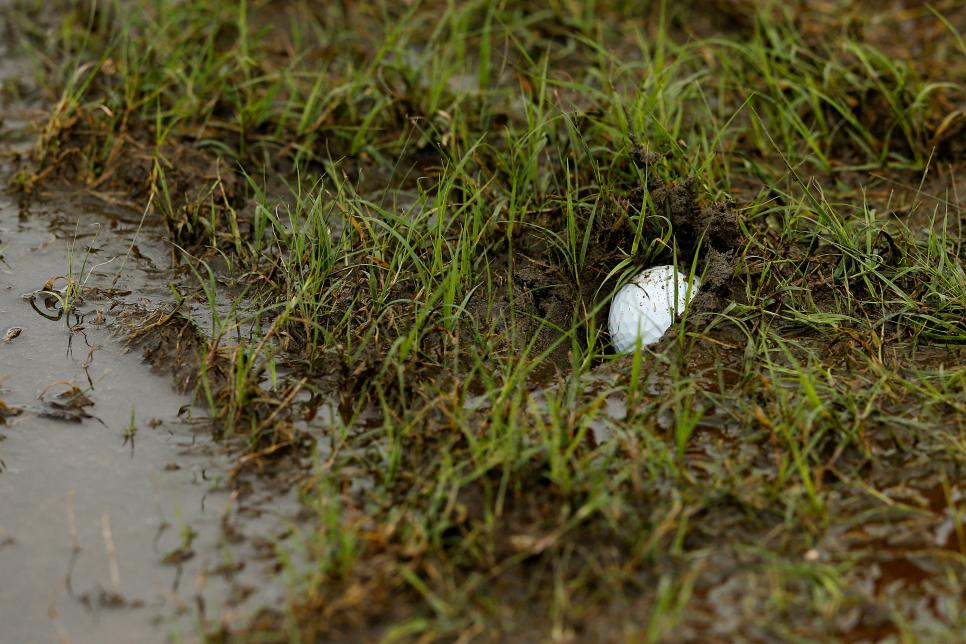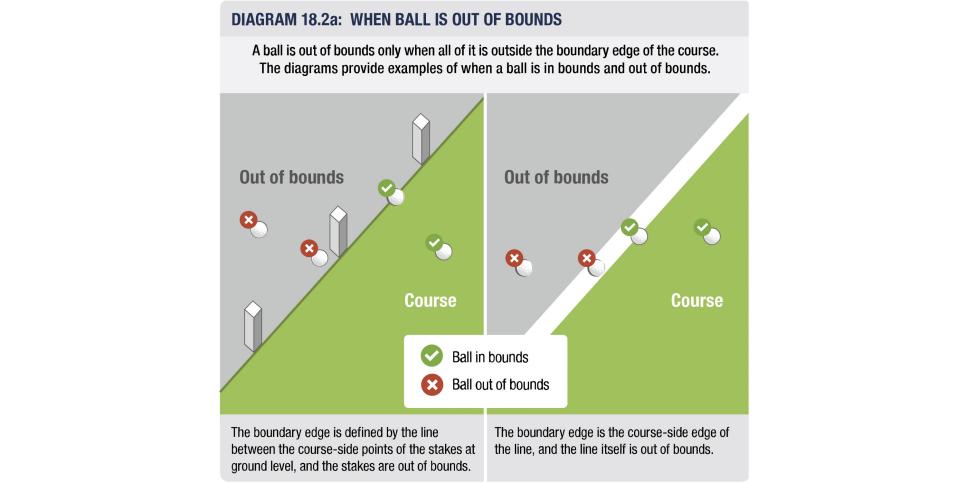Much was made in 2019 of the R&A and USGA introducing a “modernised” version of the Rules of Golf. It was an acknowledgement from golf’s governing bodies that previous editions of the rules often required more than merely common sense for those who were striving to be faithful followers. Try an upper-level university degree in linguistics. The new version, thankfully, attempted to make the rules plainer and more understandable as well as fairer and more consistent for golfers often bewildered when encountering seemingly straight-forward rules situations during a round.
All that said, the current Rules of Golf can still leave you scratching your head. When trying to legislate for a game that’s played over wide spaces that incorporates any number of varied circumstances, naturally there will be confusion and questions.
RELATED: 13 Rules of Golf you should be taking advantage of to shoot lower scores
To help golfers who might be only loosely familiar with the rules – or avid players trying to become more than casual acquaintances with them – we talked to Kendall Dunovant, an assistant manager on the rules team at the USGA, to help identify some rules scenarios that still require a bit of nuance to understand. While the USGA doesn’t govern the Rules of Golf for Australia (the R&A does), these examples are still relevant to us.
Below are 10 common circumstances golfers are likely to run into at some point on the course, and what they should know in order to quickly – and correctly – keep their round moving.
• • •
Your ball doesn’t have to be touching an immovable obstruction to get relief (Rule 16.1)
Where and how to take proper relief anywhere on the course can be confusing, but one area in particular that trips up causal players is immovable obstructions. We’re talking about sprinkler heads, drains, cartpaths or any other man-made object that cannot be moved without “unreasonable effort” or causing damage to the course.
Part of the reason for this, according to Dunovant, is that golfers have a misperception that a ball must be touching the obstruction to receive relief. In fact, you can take relief if the obstruction merely interferes with the area of your swing or your stance. One important thing to remember when taking said relief is that you must take “complete” relief from the obstruction. In other words, if you’re standing on a cartpath, you must make sure that after taking relief, the cartpath is no longer impeding your stance, swing or lie before hitting your next shot.

One more thing: you can take relief from immovable obstructions anywhere on the course except if your ball is in a penalty area or when your ball is in a lie that is clearly unreasonable to be played (such as if it’s nestled in a bush).
• • •
You can touch the sand in a bunker… sometimes (Rule 12.2)
When the R&A and USGA approved the modernised rules, they made several fundamental changes that helped everyday golfers. One of the biggest was regarding bunkers, where the rules were relaxed so players weren’t wasting time nervously tiptoeing in the sand trying to avoid anything that might constitute a penalty. Golfers can now touch the sand in a variety of instances without worry, so long as they’re not purposely attempting to test the sand while they’re doing it.Among the things that are now permitted:
- Placing a club or other equipment in the sand (if you’re between clubs and you drop one you’re not using, it’s fine if it’s in the bunker).
- Hitting the sand in anger or frustration (it’s not a great look, but doesn’t come with a penalty).
- Leaning on a club in a bunker (as when you might be waiting for another player to hit a shot).
- Digging your feet into the sand when preparing to hit a shot.
- Removing loose impediments like pebbles, leaves and pinecones (provided you don’t cause the ball to move in doing so).

Conversely, here’s what you still aren’t allowed:
- Grounding your club at address in the sand prior to the stroke.
- Touching the sand during a practice swing or with your backswing.
- Deliberately touching the sand to test its condition or learn information to help you in making your next stroke.
• • •
You can ground your club in a penalty area (Rule 17.1)
Similar to bunkers, the R&A and USGA made substantial changes to what golfers can do in penalty areas. The biggest? There are no longer special rules that apply to you when playing from a penalty area. So now you’re allowed to ground your club and take practice swings like you would elsewhere on the course. You can also remove loose impediments so long as you don’t move your ball, improve your lie or improve the conditions affecting your stroke.
• • •
You can accidentally hit your ball on the green with no penalty… (Rule 9.4)
The green is yet another place where the rules have gotten friendlier. Say you accidentally cause your ball to move on the putting green, even with a practice swing (like Matthew Wolff at the WGC–Concession). You can replace the ball with no penalty. Same if you cause your ball marker to move.
There’s also no penalty if your ball moves because of natural forces (such as wind or water). However, where you play your ball from after it moves varies. If you had already marked your ball on the green, replaced it and now a gust of wind comes up, you should return the ball to where it was when you marked it. (Dunovant says think of the ball as having “owned” that spot by virtue of being lifted and replaced there). If your ball moves before you’ve marked it, you don’t replace the ball at all, just play from the new spot – even if that spot is now off the green.
• • •
…And on the tee (Rule 6.2)
Zach Johnson has won two Major championships, but he’s also known for this infamous tee shot at the 2019 Masters:
If you’ve got a golf mate who says, “Ha! One!” make sure he knows he’s just made an awful joke… and that he’s wrong. Unless a player was intending to strike the ball, it’s not considered a stroke if he or she caused their ball to be knocked off the tee. There is no penalty, plus under Rule 6.2b(5), the player can re-tee the ball and go on… embarrassed but still lying 0.
• • •
You can’t always hit a provisional ball (Rule 18.3)
Hitting a provisional ball is allowed under the rules in the interest of saving time when you believe your original ball might be out-of-bounds or lost outside a penalty area. You must, however, announce that you’re playing a provisional, or the next shot you hit will be considered in play as if you took a stroke-and-distance penalty.
There is, however, a time when you’re not allowed to hit a provisional: when you believe a ball is lost inside a penalty area. Dunovant says this is because if the ball is in the penalty area, you have multiple relief options to choose from. If you’ve hit a provisional, you’ve gotten to preview one of those options (re-hitting from the previous spot), which might shade what relief option you take.
One more thing about hitting a provisional: if you hit one off the tee and it lands in the middle of the fairway and you’re pretty sure your original ball will be in a precarious spot if it’s somehow found, you can elect not to search for the original ball. Though you cannot declare your ball lost, if you play your provisional ball from a place nearer the hole than the estimated spot of your original ball, your provisional becomes your ball in play. This is important to note because if the original ball is found before you’ve played the provisional, either by you or somebody else, and is in-bounds, you must now play that original. And if the lie is unplayable, you can’t just use your provisional ball. You must take relief for an unplayable lie, which might mean you still have to go back to the tee and hit another shot.
• • •
Your ball is not considered embedded if somebody stepped on it (Rule 16.3)

How to determine if you have an embedded ball and what relief you’re entitled to became a hot-button issue in January when Patrick Reed encountered the situation during the third round of the Farmers Insurance Open at Torrey Pines. While many who followed his actions at home questioned Reed’s tactics, by the letter of the rulebook he proceeded correctly.
Under Rule 16.4, a player can mark and lift a ball to see if it lies in a condition where relief is allowed. If you proceed under this rule and it’s determined that the ball isn’t embedded, you replace the ball on its original spot and play from there. If the ball does meet the objective conditions that define being embedded, a player can measure one club length, no nearer the hole, from the spot directly behind where the ball became embedded (so the pitchmark isn’t in the relief area) and take a free drop.
What defines if a ball is embedded? First, the ball must be in your own pitchmark as a result of the previous stroke. That means that if your ball is plugged in the ground because somebody stepped on it or ran over it with a cart, the ball is not embedded. The ball also must be at least partially below the surface of the ground. So if the ball is just in really long grass but resting on the surface, it’s not embedded under the rules.
• • •
You’re only OB if your entire ball is OB (Rule 18.2)
While tricky at times because out-of-bounds boundaries aren’t always continuous on golf courses, the standard for determining if a ball is OB is straight forward: the entire ball needs to be out-of-bounds for the ball to be considered OB. So if there’s a painted line and half the ball is on the painted line and half is on the course, the ball is in play. If there are stakes where you might use string from stake-to-stake but you don’t have string and you’re eyeballing it, if a part of the ball is on the course, you’re in play. If the entire ball is touching the painted line, none touching the course, then it’s OB.

Maybe you get lucky and your ball remained in play, but now it’s near an OB boundary and that OB boundary is a chainlink fence that inhibits your swing. In that situation, unfortunately, there’s no relief from the boundary object. You’ll have to play hard, Dunovant says, or you can take unplayable ball relief for one penalty stroke.One other note: if your ball is in-bounds, you are allowed to be standing out-of-bounds and still play the shot.
• • •
You must correct hitting a wrong ball, even though it will cost you (Rule 6.3c)
You hit your drive into the rough off the tee, walk to where you think your ball is and hit your second shot short of the green. You chip your ball up on the green with your third but when you mark it you realise it’s not your ball. Now what? In matchplay, the hole is over because the penalty for playing a wrong ball is loss of hole. In strokeplay, the proper way to proceed is to correct your mistake. That means that you need to go back and play your original ball. Hopefully, you will be able to find it, and if you do, you add two strokes as the penalty for playing the wrong ball, but you don’t count any of the strokes you hit with the wrong ball. You’re hitting 4 and you play on.
If you can’t find your original ball within three minutes of searching, it is then determined to be lost. Unfortunately, now you must take the stroke-and-distance penalty for this and return to the tee. Once there, you add the two strokes for playing the wrong ball, and now you’re hitting 5.
• • •
Red penalty areas give you three relief options, yellow gives you two (Rule 17.1)
There is one notable difference between the options a player has when taking relief after hitting a ball into a red penalty area versus yellow. Red stakes allow players to also take lateral relief (up to two club-lengths, no nearer the hole) from where the ball entered the penalty area in addition to returning to the spot from the previous shot and back-on-the-line relief where you can drop anywhere on an imaginary line drawn from the hole through the spot where the ball last crossed into the penalty area. The last two are the lone options if the penalty area is yellow. All options require a player to take a one-stroke penalty, but the player does also have the option to play the ball as it lies.



